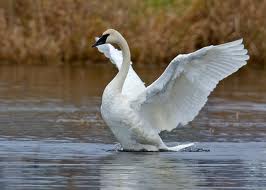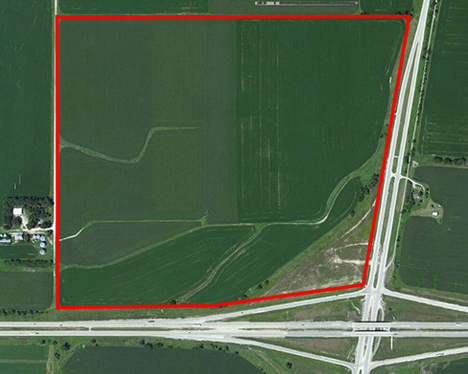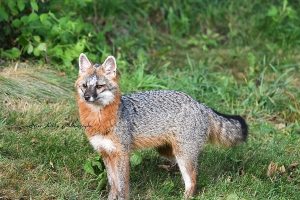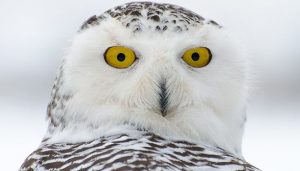CLICK HERE for the latest market quotes from the Iowa Agribusiness Network!
CLICK HERE for the latest market quotes from the Brownfield Ag News Network!
CLICK HERE for the latest market quotes from the Iowa Agribusiness Network!
CLICK HERE for the latest market quotes from the Brownfield Ag News Network!
(Radio Iowa) – Iowa’s largest manufacturing employer is partnering with a Chicago-area company to reduce harmful emissions from its equipment by replacing diesel fuel with ethanol. Quad Cities-based John Deere is working with ClearFlame Engine Technologies of Geneva, Illinois, where C-E-O B-J Johnson says their initial work was on a Cummins X-15 engine from an on-road semi. “The partnership with Deere and the investment from Deere is going to allow us to move that over to one of their engine platforms, to use across a range of applications like agriculture and construction, do an engine demo with them,” Johnson says, “and then towards the end of next year ideally translate that into an actual field demo of the technology on a piece of equipment.”
The goal will be to migrate the technology into tractors, combines, excavators and other heavy equipment. Johnson says the next step is for Deere to supply an engine that’s used in a range of its equipment, which ClearFlame will modify in its lab. “It changes only about 10 or 15% of the parts of the engine. The largest change is just making the fuel injection system compatible with a different fuel, like ethanol, and the rest of it is optimizing the engine to run at a higher temperature,” Johnson says. “Basically, if you get a diesel engine to run a little bit hotter, then you’re freed to use a whole wider range of fuels.”
Johnson says using corn-based ethanol instead of diesel can reduce carbon dioxide emissions by 45 to 50 percent, with even bigger reductions possible in the future. The word “burning” doesn’t always have to be bad, Johnson says, as it depends on what you’re burning. “If you’re burning a fossil fuel, yes, that is absolutely bad, but we’ve got liquid fuels today that are 50% cleaner than that because they come from renewable sources,” Johnson says, “and the Renewable Fuels Association has a goal to get to carbon-neutral ethanol by 2035.”
Johnson says this research could help boost the rural economy, especially in Iowa, the nation’s number-one ethanol producer. Today, the U-S is producing about 17 billion gallons of ethanol a year, and every one-percent of trucks converted to burning ethanol can result in the need to produce another billion gallons of the fuel.
(Atlantic, Iowa) -Officials with the Cass County Conservation Service report the sponsors of the Trumpeter Swan arrival contest have determined the official arrival of the swans as November 22nd. On that day 22 Trumpeter Swans arrived at the Schildberg Recreation Area. They stayed there for more than twenty-four hours.
The person who that picked that date was Mary Lou Hoskins. The School contest was won by Mrs. Zaiger’s Science class in Griswold School District. They will receive a Trumpeter Swan prize pack from the Cass County Conservation Board. 
Cass County Conservation thanks to all who participated!
LENEXA, KAN. – (DEC. 17, 2021) – BNSF Railway Corporation has agreed to pay $1,513,750 to resolve alleged violations of the federal Clean Water Act. According to the U.S. Environmental Protection Agency (EPA), BNSF released approximately 117,500 gallons of heavy crude oil when one of its freight trains derailed outside of Doon, Iowa, in June 2018, resulting in discharges to the Rock River, Little Rock River, and Burr Oak Creek.
EPA Region 7 Administrator Meg McCollister says “Illegal discharges of oil into streams, rivers and wetlands present a significant threat to human health and the environment. EPA is committed to protecting our nation’s waterways and will ensure that Clean Water Act protections are upheld.” The EPA says the derailment occurred during heavy flooding in the area. Impacts from the oil spill included an evacuation order for nearby residents, elevated levels of hazardous substances within the affected site, closure of nearby drinking water wells, destruction of crops, and deaths of at least three animals.
BNSF, headquartered in Fort Worth, Texas, operates one of the largest railroad networks in North America. Discharges of pollutants, including oil, into federally protected waterways are violations of the Clean Water Act.
(Atlantic, Iowa) – The Valley Business Park Board held a sale for the land at the Cass County Community Center, Thursday. The property sold for $16,000 per acre. The Board made the decision to sell the property back in October, 2021. The Park contains 156 acres of property located at the intersection of I-80 and Highway 71 in both Cass County and Audubon Counties. Iowa Land Co handled the auction.

Valley Business Park aerial outline (Via Atlanticiowa.com/cadco)
(Des Moines, Iowa) – State forestry experts are encouraging Iowans to proceed with caution as they begin cleaning up the tree damage from Wednesday’s storm. Emma Hanigan, urban forestry coordinator for the Iowa Department of Natural Resources, suggests homeowners hire a tree care professional if they do not have the experience, ability, and equipment to safely prune their own tree. Homeowners planning to do their own tree cleanup should wear safety equipment, including hand, foot, leg, eye, face, hearing and head protection, and avoid wearing loose-fitting clothes while using a chainsaw. “Be careful when working with trees and limbs that are snapped off, twisted and tangled together,” warns Hanigan. “The trunk or tree limbs may bind against the chainsaw.”
After cleanup is complete, homeowners wanting to have their trees inspected should contact a professional, insured arborist. The arborist can examine trees for cracks or other issues that might have been overlooked. Routine tree care of young trees makes them more resilient long term and decreases the likelihood of storm-related damage. Hanigan said younger wind-thrown trees can be saved by staking and guying, but larger trees are less likely to recover. When the time is right, homeowners who have lost trees are encouraged to replant.
The Iowa DNR has information and links to help homeowners identify and select a licensed arborist, and tips on chain saw safety, pruning and tree care and replanting online at https://www.iowadnr.gov/urbanforestry
(Des Moines, Iowa) – The Iowa DNR is asking for your help in learning more about the secretive Gray Fox species.
Gray fox were listed as a Species of Greatest Conservation Need in Iowa in 2015 based on a decline in the gray fox population observed over the past 25 years. Similar trends have been noted in several other Midwestern states. The gray fox is smaller than coyotes and red foxes. Adult gray foxes typically weigh 10 – 12 lbs. They are mostly gray with patches of reddish, tan fur down the side of their neck and body. A distinct black line extends down the top of their tail. Their face also has distinct black and white markings.
The gray fox population decline in Iowa is correlated with increases in the population of coyotes, raccoons, and bobcats. Increasing coyote and bobcat populations may affect gray fox populations through competition and predation. Raccoons may impact gray fox populations through the spread of disease, particularly canine distemper virus.

Small Gray Fox
Canine distemper is common in raccoons, and gray fox are highly susceptible to this lethal disease. Changes in our forests habitat may also contribute to lower gray fox numbers. Mature, even-aged forests don’t support the prey base needed for gray fox. However, the cause or causes of the decrease in the Iowa gray fox population is unknown. A combination of these factors, as well as potential other unknown factors, may have contributed to their decline.
The Iowa Dept. of Natural Resources wildlife staff monitors the gray fox population in Iowa through surveys and harvest annually. For example, the Iowa Bowhunter Observation Survey began in 2004, and currently provides annual data upon which to base population trend analysis. Bowhunters record the amount of time they spend in the field, and the number of gray fox (along with other species of wildlife) they see during each hunt outing.
The bowhunter observation survey allows us to standardize the number of sightings based on the amount of time or effort spent bowhunting, resulting in an index that provides insight into trends in furbearer populations such as gray fox. The Iowa Dept. of Natural Resources wildlife research staff are initiating efforts to conduct a pilot study to monitor and gather information on gray foxes, so we can begin the process of understanding the causes of their population decline. Due to their already low numbers, you can help out the DNR by providing them with gray fox locations!
The DNR is asking for information on any sightings or recent trail cam images (within the last 6 Months) of gray foxes that are alive. Just send an email or call Dave Hoffman or Vince Evelsizer with location information such as GPS coordinates or Twp,Rge,Sec. Dropping and sending a pin works great too.
Dave Hoffman – Iowa DNR Wildlife Phone: 641-425-0737; Email: david.hoffman@dnr.iowa.gov
Vince Evelsizer – Iowa DNR Wildlife Phone: 641-231-1522 Email: vince.evelsizer@dnr.iowa.gov
If you find a dead gray fox (roadkill, trapped, hunted, other) that’s in decent condition, we’d be interested in having the carcass for further examination/necropsy. Please contact Rachel Ruden (Iowa DNR Vet) or Vince Evelsizer if you do have one. Rachel Ruden – Iowa DNR Wildlife Veterinarian Phone: 515-823-8544; Email: Rachel.ruden@dnr.iowa.gov
(Des Moines, Iowa) – Officials with the Iowa Department of Natural Resources report Snowy Owls are making their way into the state, looking for food on their way south. You can observe the winged wonders, but please, give them space so they can hunt undisturbed. If your presence changes the behavior of an owl (Ex: it flies or looks right at you) you’re too close and you may be causing undue stress. Do not approach an owl unless it is obviously injured or struggling to fly, and always consult a licensed wildlife rehabilitator before intervening.
Snowy Owls breed in the open landscapes of the Arctic Tundra. During summers with abundant food (particularly lemmings), many young are produced, and the following winter, many of those young owls disperse south into the US to look for winter prey. When large numbers of owls move south in winter it’s called an irruption. Although it’s not a large irruption year, at least a dozen snowy owls have been seen in Iowa so far this season, with many arriving in the last two weeks. Unlike other owls, Snowy Owls are active during the day (diurnal) and can be spotted in open areas, like agricultural fields and airports, looking for food. Snowy Owls are sit-and-wait predators and often sit in one spot for hours at a time. They commonly perch on wooden fence posts and telephone poles, or find a spot to sit on the ground.
Although some people may worry that Snowy Owls will be susceptible to heat stress in an unseasonably warm Iowa winter, there is little evidence to suggest that a few days of temperatures in the 70s will be too much for the birds to handle. In their breeding range, days in the 50s are common and Snowy Owls have been observed surviving the winter as far South as Florida where average daily highs are in the upper 60s all winter long. More pressing threats are human-related (Ex: collisions with vehicles and power lines).
The DNR is interested in learning more about Snowy Owls wintering in Iowa and the threats they face, so if you happen to find a dead Snowy Owl, please report it to Iowa DNR’s Avian Ecologist Anna Buckardt Thomas (anna.buckardt@dnr.iowa.gov, 515-823-3945) and/or the State Wildlife Veterinarian Dr. Rachel Ruden (rachel.ruden@dnr.iowa.gov, 515-823-8544).
If it is safe to do so, you may retrieve dead owls using gloves and a garbage bag. Keep in a cool place but avoid freezing until you can turn over to a wildlife biologist or conservation officer. Remember, unless you are transferring to the Iowa DNR or other permitted entity, it is illegal to be in possession of a migratory bird carcass under federal law.
(Radio Iowa) – While most Iowans aren’t complaining about the unseasonably warm weather we’re having, December highs in the 50s and 60s are making life tough for the state’s snow skiing resorts. Joel Bryan, general manager of Seven Oaks Recreation Area near Boone, says this rollercoaster weather is posing a quite a challenge for his facility.
“With our updated snow-making system, Mother Nature has given us enough cold temperatures to continue to put fresh snow out, but then right after we make snow, it seems like we start getting into the 50s and 60s again,” Bryan says. “We do get a little melt but we are a north-facing slope which gets limited sun exposure, so — so far, so good.” Bryan said he has concerns about tomorrow’s (Wednesday) prediction of potential record-breaking warmth, although he says the winds cause him more trouble than the temperatures.
“The wind will actually melt the snow a little bit faster than just the ambient air temperature will,” Bryan says. “Between those two, we’re definitely going to lose two, three or four inches of our base, but we are sitting with a 12- to 18-inch base on 100% of our runs, so fingers are crossed we can get through this and we get to the end of the week when the cold weather comes back.” The facility is equipped with a sophisticated snow-making system, though certain atmospheric conditions need to be met.
“It looks like Thursday night there’s a possibility we would start making snow again,” he says. “For sure, Friday night, and looking at the long-range forecast from there, it looks like every night from there on out until Christmas we can make snow which is going to allow us to be 100% open for skiing, snowboarding and snowtubing going into the Christmas break.” Sundown Mountain Resort in Dubuque opened most of its ski trails on December 9th and is posting updates about snow conditions on its website.